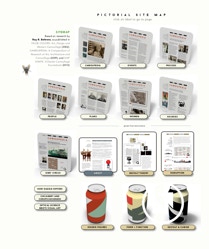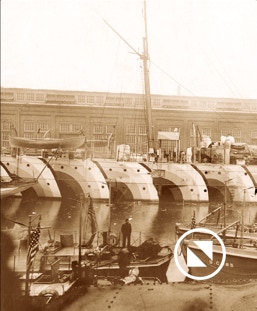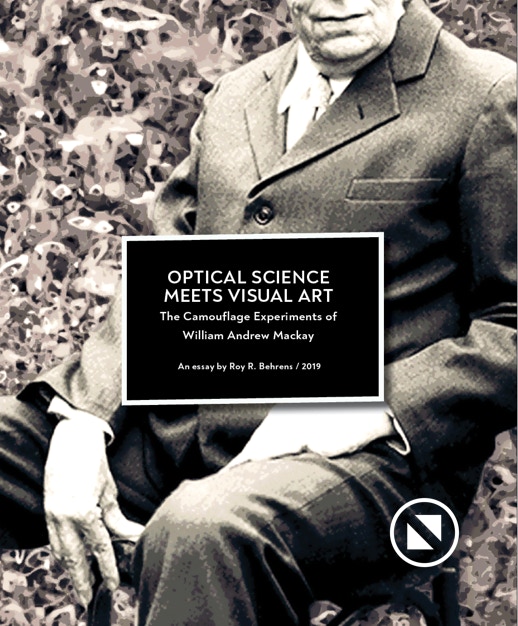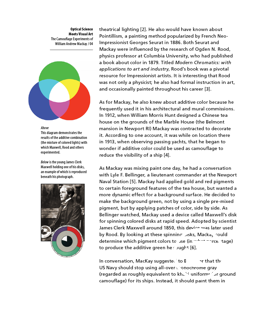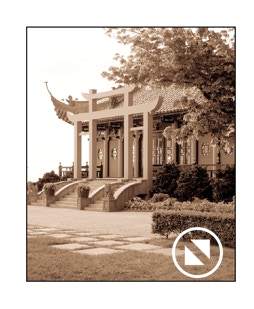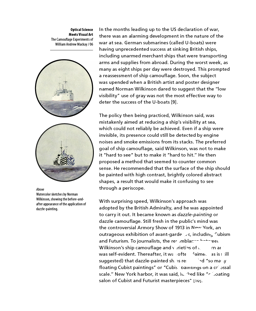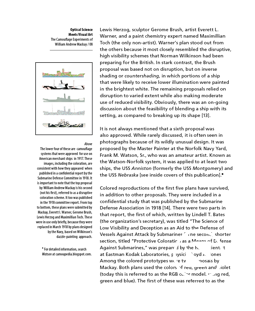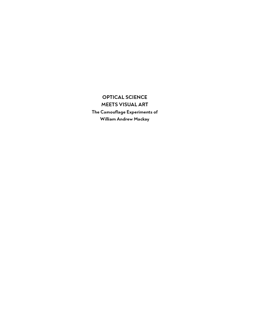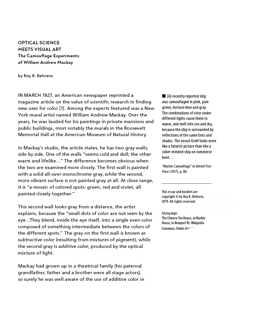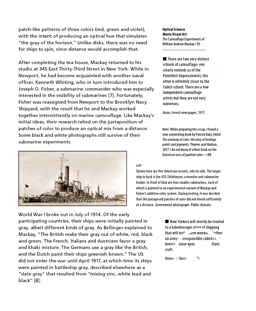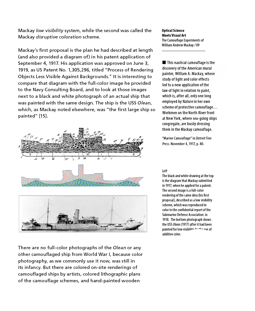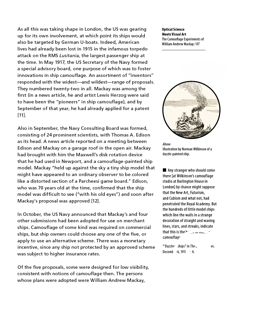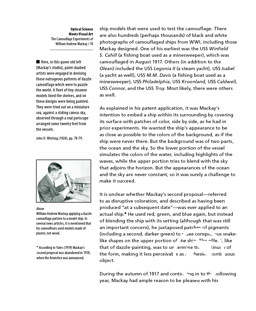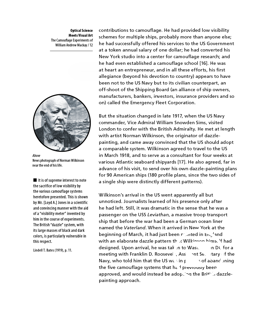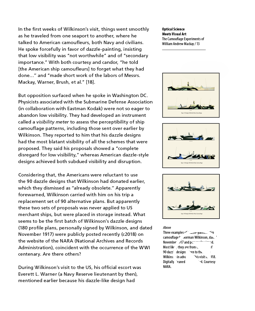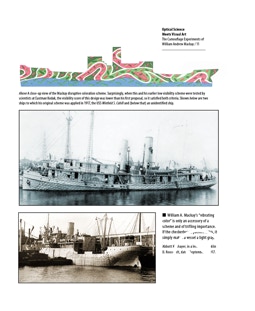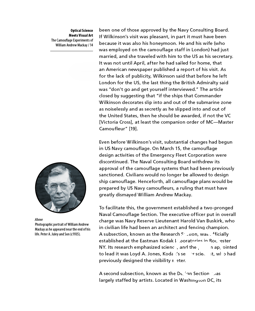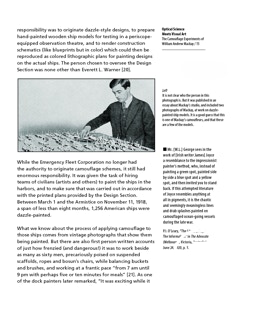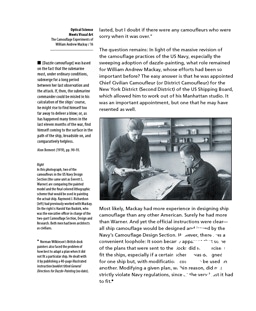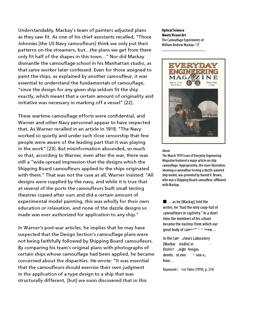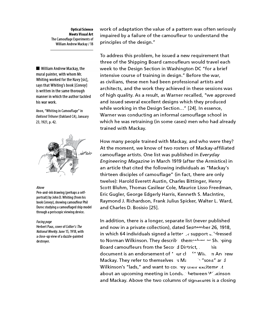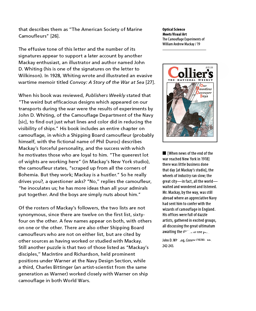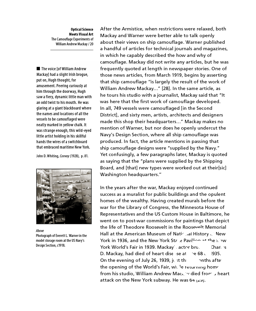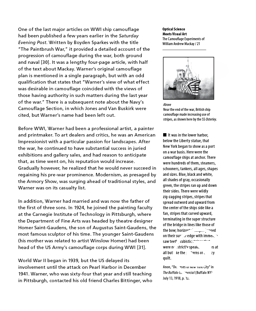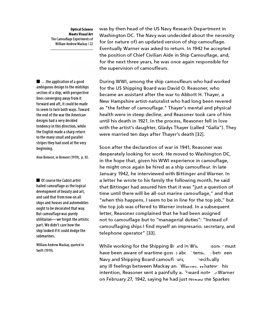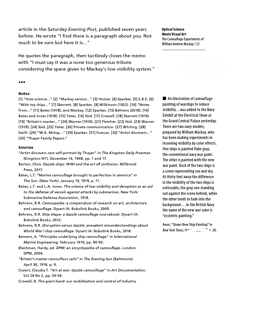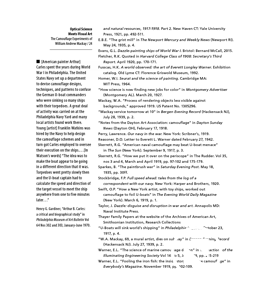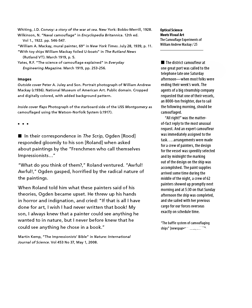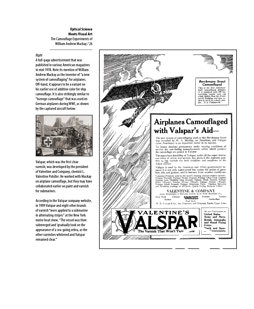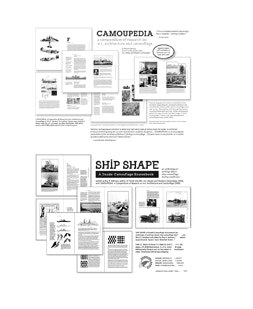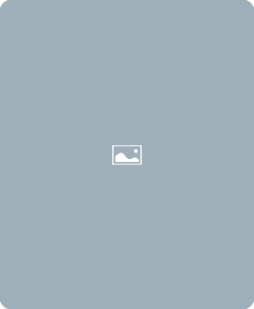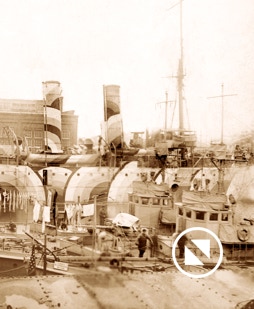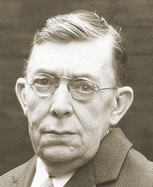
CAMOUPEDIA
Optical Science Meets Visual Art:
The Camouflage Experiments of
William Andrew Mackay
An Essay by Roy R. Behrens. Copyright © 2019. All rights reserved.
This web page and the essay at right have been substantially revised (enlarged and refined) since they were first posted.
This essay was privately published in March 2019 as a full-color laser-printed booklet.
It can be read online on this webpage simply by clicking on each single page as reproduced on the right. Any page that has a magnifying icon will enlarge on screen by clicking.
This is one of a series of new online essays about the development of ship camouflage during World War I. They are attempts to make sense of surviving vintage photographs and scattered, recently discovered texts about aspects of the subject. Until now, the involvement of American muralist William Andrew Mackay has never been discussed at length.
•••
RECENTLY in a test, a fleet of several American submarines were painted in a certain way, which I am not allowed to describe at this writing, and were sent from New York to Boston, along the Atlantic Coast, with orders to keep together. So clever was the camouflage, however, that two of the craft which arrived at their port of destination less than half an hour apart, reported that they had not be able to locate each other at any time during the trip. German submarines have been taken into English ports, captives of war, which were painted a sea green, with imitation wave foam all over their top in irregular patches, with the object of making them invisible to the scanning eye of the enemy lookout…[Allied] naval camouflagists say that instead of painting submarines sea green, they get better results by painting the submarines in square blocks, checkerboard style, using the primary colors that go to compose the green of the ocean. This is said to be much more deceptive to the human eye.
“Camouflage” in Dayton Daily News (Dayton OH), December 23, 1917, pp. 8 and 12.
Other essays in this series are available as full-text online postings by clicking on each of the titles below—
• Under the big top at Sims’ circus: ship camouflage behind the scenes during World War I
• Chicanery and conspicuousness: social repercussions of World War I ship camouflage
• Disruption versus dazzle: prevalent misunderstandings about World War I ship camouflage
THE CAMOUFLAGE Corps of the National League for Woman’s Service redecorated the good ship [USS] Recruit in Union Square [in New York]…[Twenty-four women] assisted by a squad of sailors, worked under the direction of Worden Wood, who is now designing rainbows to cover the side of the vessels of the United States Shipping Board. The new dregs of the Recruit were designed by William A. Mackay, head camoufleur of the Shipping Board, and are represented by a liberal sprinkling of black, white, pink, green and blue arranged in the most effective manner for avoiding submarines.
“Camouflage The Recruit” in The New York Times, July 12, 1918.
ON THE SECOND floor of Building One [at MIT], there is one of the most complete camouflage sets in this country. The apparatus, drawings, and models came from Washington, New York, and Boston. After the signing of the Armistice, Mr. Blume proposed to give the results of the research done by the Navy Department and the Emergency Fleet Corporation to Technology. He sent the camouflage theatre, models and other apparatus. Mr. William A. Mackay contributed to this set many models designed in New York. A complete assortment of the results obtained and of instructions is also due to the kindness of Mr. Mackay. The camouflage apparatus would not be reposing in the Technology buildings if Mr. Henry C. Grover had not given orders to that effect.
“Camouflage Apparatus at MIT” in the MIT Technology Review. Vol 21, c1919, p. 121., July 12, 1918.
•••
Revised and updated on March 13, 2019
